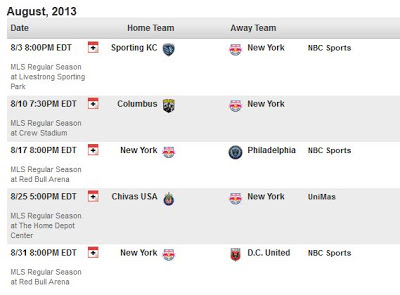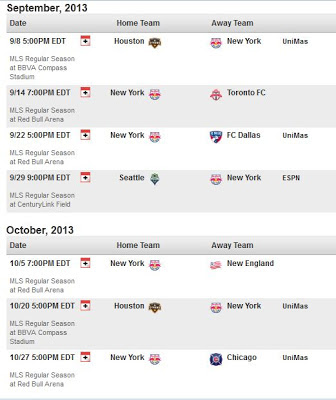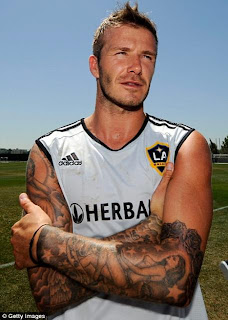Can you imagine the American-based National Football League holding
the Superbowl in, say, Italy?
Could you imagine 29
Basketball teams allowing one Argentine team to play with them, and then having
the audacity to call their national tournament the “World Series of Basketball?”
Can you imagine a Boston Bruins hockey player falling on the ice,
and being immediately helped up by a New York Ranger?
Probably not. But that’s
because American Sports are…well…American, and insular. Only during the Olympic season, and during
rare, fleeting American media coverage of major global matches such as Soccer’s
World Cup, are Americans even aware of sports in other nations.
And yet, in this insular world, the winds of change are blowing. For those not glued to the London games, this
past weekend saw a series of sporting events, here in the United States, that
indicates a growing challenge to “The Big Four” (American Football, Baseball,
Basketball, and Hockey) and the insularity of American sports.
Yesterday (Saturday, July 28), France held its Trophée des
Champions, the equivalent of France’s Soccer Superbowl….in Harrison, New
Jersey.
In spite of threatening weather, 15,000 fans turned
came out to the New York Red Bulls Stadium to watch Olympique Lyonnaise battle
Montpellier to mark the official start of French soccer season (the cup is
played at the beginning of the ‘next’ season, rather than at the ‘end’ of the
season).
"New York is a magical place, and we were more
motivated to play in New York and for a Cup final," Said Lyon forward
Jimmy Briand, who scored the tying goal in the 77th minute and also converted
the decisive penalty kick to give Lyon the title.
The game is traditionally played in France, but the
last three cups have been settled in other French-speaking foreign nations: in
Montréal, Canada; Tunisia; and Morocco.
This marks the first time that the French have chosen to pay their ‘soccer
superbowl’ in Anglophone America, and is indicative of the winds of change
blowing on the international – and American – sports scene. The match was televised in almost 200 nations
around the world.
“I think this was a solid first step for the French
Federation to grow their brand with the American fan base and with American
companies looking to expand even more into soccer,” said Chris Lencheski, CEO
of Front Row Marketing Services, the Comcast-owned company that helped with the
tour and the French Cup. “The U.S. is becoming more and more soccer savvy,
because of the efforts of MLS and the continued marketing prowess of foreign
clubs, and it makes great sense for the French to be in the mix as well. Today
was a great example of how strong French soccer is, and it played out not just
before a crowd in New York but before a global audience online and on TV. It
was a great day for their league and for the sport.”
Meanwhile, the NY Red Bull Soccer Team was not on hand
to witness the match at their home stadium.
The Red Bulls, the top-seeded Soccer club in Major League’s Soccer’s
Eastern Conference, was playing the Montréal Impact in their Saputo
Stadium.
I openly admit: I have recently become an MLS
junkie. We had the Red Bulls-Impact game
live-streaming on our laptops last night, while the Western Conference powerhouse
LA Galaxy (home to now-famous import David Beckham) match against FC Dallas was
on the Flat-screen TV six feet away.
But I also know I am not alone: In
2011, MLS reported an average attendance of almost 18,000 per game, with a
total attendance of 5,468,951. Prior to the 2010 season, MLS had never broken
4 million in attendance, and only barely did so in 2010 (4,002,053). That’s
a one-year increase of 37 percent, and that’s just stadium attendance; it doesn't
include media spectators.
Even more important: At an attendance of nearly 18,000
fans per game, Major League Soccer is now attracting more fans, in the stadium,
than 17 NBA teams and 15 NHL teams (*see list at end of post). Last year, the NY Red Bulls averaged 19,700
fans per game; the NY Rangers pulled 18,000; the NJ Nets, 14,000; and the NY
Islanders 11,000.
Why the impressive growth in soccer in the U.S.?
Perhaps traditional American sports fans are tired of
ego-driven million-dollar salary contracts.
Perhaps they’re tired of having Corporate money shoved in their face at
every turn.
With each new NFL or MLB stadium expansion or rehab,
from Green Bay to Citi Field to Fenway Park, more space is given to premium suites
that are out of the reach of ordinary fans; in contrast, Major League Soccer
teams have devoted entire seating sections to independent Fan Clubs that bring drums
and chants and banners and passion. The
fans-in-the-stands are actually respected and appreciated, and it shows.
As I watched from my chair last night, four times I
saw soccer players extend a hand and help up a fallen man from the opposing
team. I watched guys on opposing teams exchange
shirts with each other at the end of the match in a display of sportsmanship
and camaraderie.
And I realized I am part of a growing number of
Americans embracing a truly global sport, played the way professional sports
used to be played, with a respect for the players, each other, and the fan base that has long gone by the
boards in America’s “Big Four.”
(Photo: Bill Gaudette, NY Red Bulls Goaltender)
.
*NBA teams with lower average attendance than MLS: Clippers, Suns, Nuggets, Wizards, Pistons, Raptors, Rockets, Bobcats, Hawks, Bucks, Timberwolves, 76ers, Hornets, Grizzlies, Nets, Kings and Pacers.
NHL teams with lower average attendance than MLS: Bruins, Sharks, Lightning, Oilers, Hurricanes, Predators, Panthers, Stars, Avalanche, Devils, Ducks, Blue Jackets, Jets, Coyotes, and Islanders.
.




































